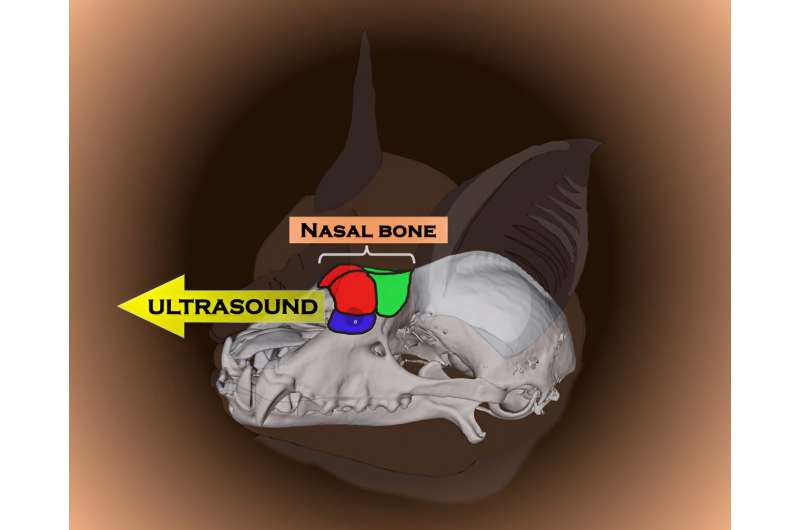
Japanese horseshoe bats—or Nihon Kikugakushira—emit high-amplitude, ultrasonic waves from their nostrils. Several ultrasound-related studies have previously attempted to address the significant regional variability noted in bats’ nasal morphologies, without yielding conclusive results.
Now, a research team led by Kyoto University has hit on the possibility that this family of bats’ nasal bones may unlock the mystery of the intraspecific variations in echolocation. The researchers focused on regional differences in the maximum amplitude of ultrasonic waves emitted by rhinolophid bats for echolocation, as well as the functional relationship with morphological variability of the bat cranium.
Using 3D models of bat skulls—based on CT scans from museum specimens of Rhinolophus nippon and Rhinolophus cornutus—enabled the team to analyze morphometric variations. These specimens are endemic to East Asia, including Jeju Island and the Japanese archipelago.
“Our results suggest that the bat’s nasal bone site variability may influence speciation, leading to changes in morphology and ultrasonics—also called the dialect—of rhinolophids,” says first author Yugo Ikeda of the Kyoto University Museum.
Previous studies have pointed to the association between the unique dome-shaped nasal bone and ultrasonics among the many traits in the family Rhinolophidae, which emit ultrasound from their noses. However, the smooth structures, such as nasal swellings and brain cases, in the bat’s nasal bone make mutational analysis challenging to evaluate using two-dimensional images.
The 3D geometric morphometrics has become the standard for evaluating morphological mutations in smooth structures. Utilizing this technology has enabled Ikeda’s team to show the relationship between nasal morphological variability and echolocation-related ultrasonic wave patterns among inter-species and in-species.
“The unique speciation mechanism of these bats corresponds with their evolutionary adaptation to island environments,” concludes Ikeda.
The paper is published in the journal Acta Chiropterologica.
More information:
Yugo Ikeda et al, Nasal Bone Variability in two Japanese Horseshoe Bats Revealed by 3-Dimensional Geometric Morphometrics, Acta Chiropterologica (2024). DOI: 10.3161/15081109ACC2023.25.2.012
Citation:
Variability of bat nasal bone morphology found to determine ultrasonic localization (2024, February 19)
retrieved 19 February 2024
from https://phys.org/news/2024-02-variability-nasal-bone-morphology-ultrasonic.html
This document is subject to copyright. Apart from any fair dealing for the purpose of private study or research, no
part may be reproduced without the written permission. The content is provided for information purposes only.







